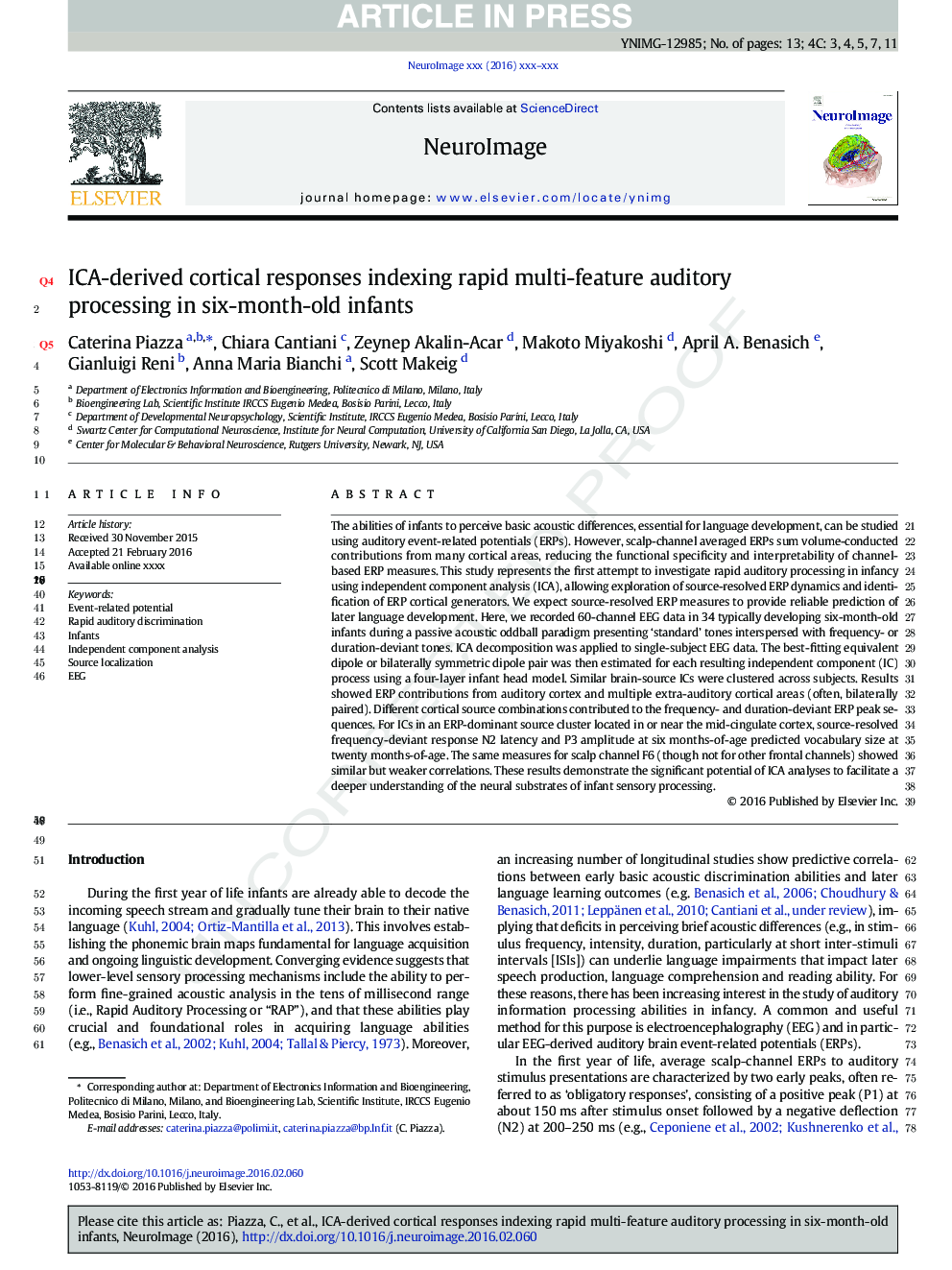| Article ID | Journal | Published Year | Pages | File Type |
|---|---|---|---|---|
| 6023546 | NeuroImage | 2016 | 13 Pages |
Abstract
The abilities of infants to perceive basic acoustic differences, essential for language development, can be studied using auditory event-related potentials (ERPs). However, scalp-channel averaged ERPs sum volume-conducted contributions from many cortical areas, reducing the functional specificity and interpretability of channel-based ERP measures. This study represents the first attempt to investigate rapid auditory processing in infancy using independent component analysis (ICA), allowing exploration of source-resolved ERP dynamics and identification of ERP cortical generators. Here, we recorded 60-channel EEG data in 34 typically developing 6-month-old infants during a passive acoustic oddball paradigm presenting 'standard' tones interspersed with frequency- or duration-deviant tones. ICA decomposition was applied to single-subject EEG data. The best-fitting equivalent dipole or bilaterally symmetric dipole pair was then estimated for each resulting independent component (IC) process using a four-layer infant head model. Similar brain-source ICs were clustered across subjects. Results showed ERP contributions from auditory cortex and multiple extra-auditory cortical areas (often, bilaterally paired). Different cortical source combinations contributed to the frequency- and duration-deviant ERP peak sequences. For ICs in an ERP-dominant source cluster located in or near the mid-cingulate cortex, source-resolved frequency-deviant response N2 latency and P3 amplitude at 6 months-of-age predicted vocabulary size at 20 months-of-age. The same measures for scalp channel F6 (though not for other frontal channels) showed similar but weaker correlations. These results demonstrate the significant potential of ICA analyses to facilitate a deeper understanding of the neural substrates of infant sensory processing.
Related Topics
Life Sciences
Neuroscience
Cognitive Neuroscience
Authors
Caterina Piazza, Chiara Cantiani, Zeynep Akalin-Acar, Makoto Miyakoshi, April A. Benasich, Gianluigi Reni, Anna Maria Bianchi, Scott Makeig,
